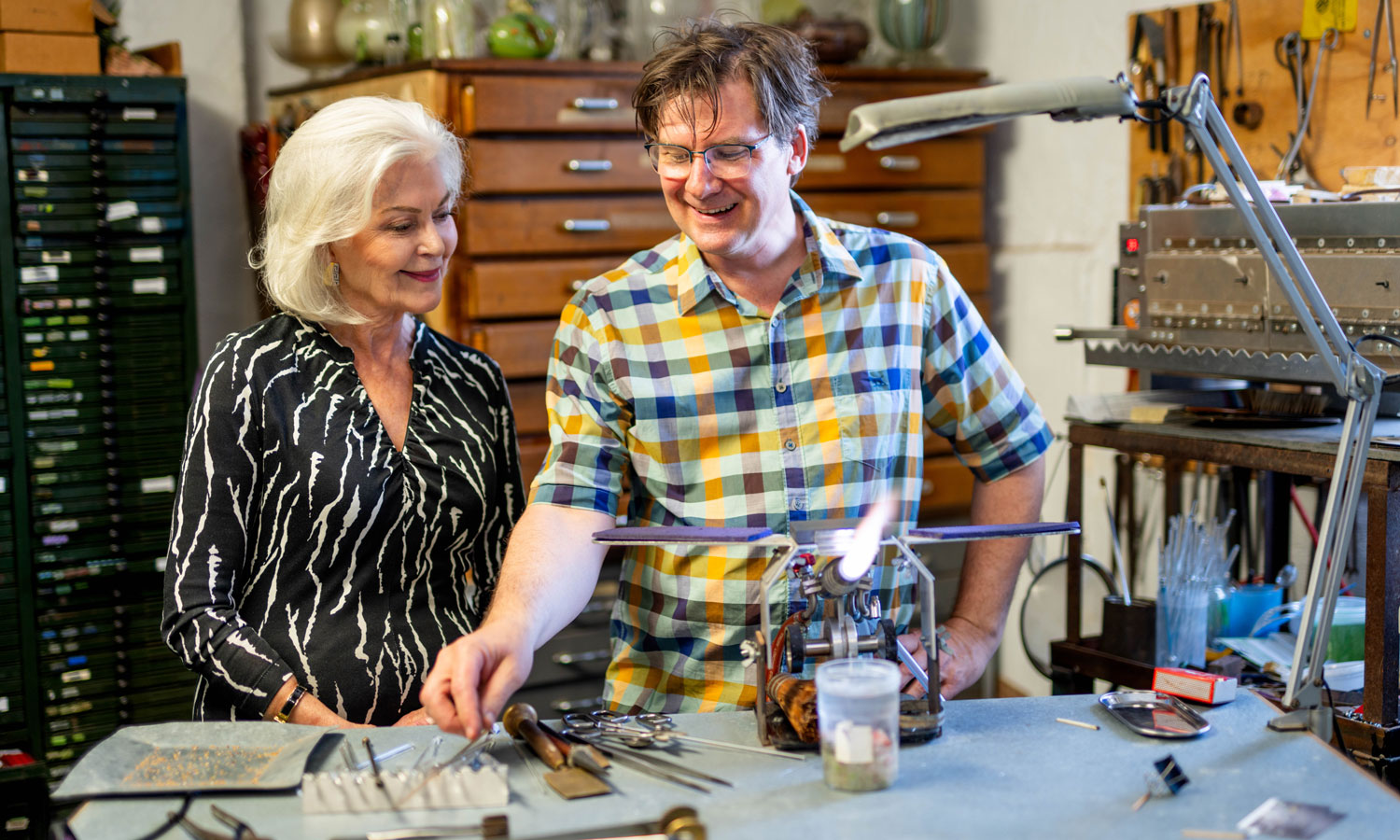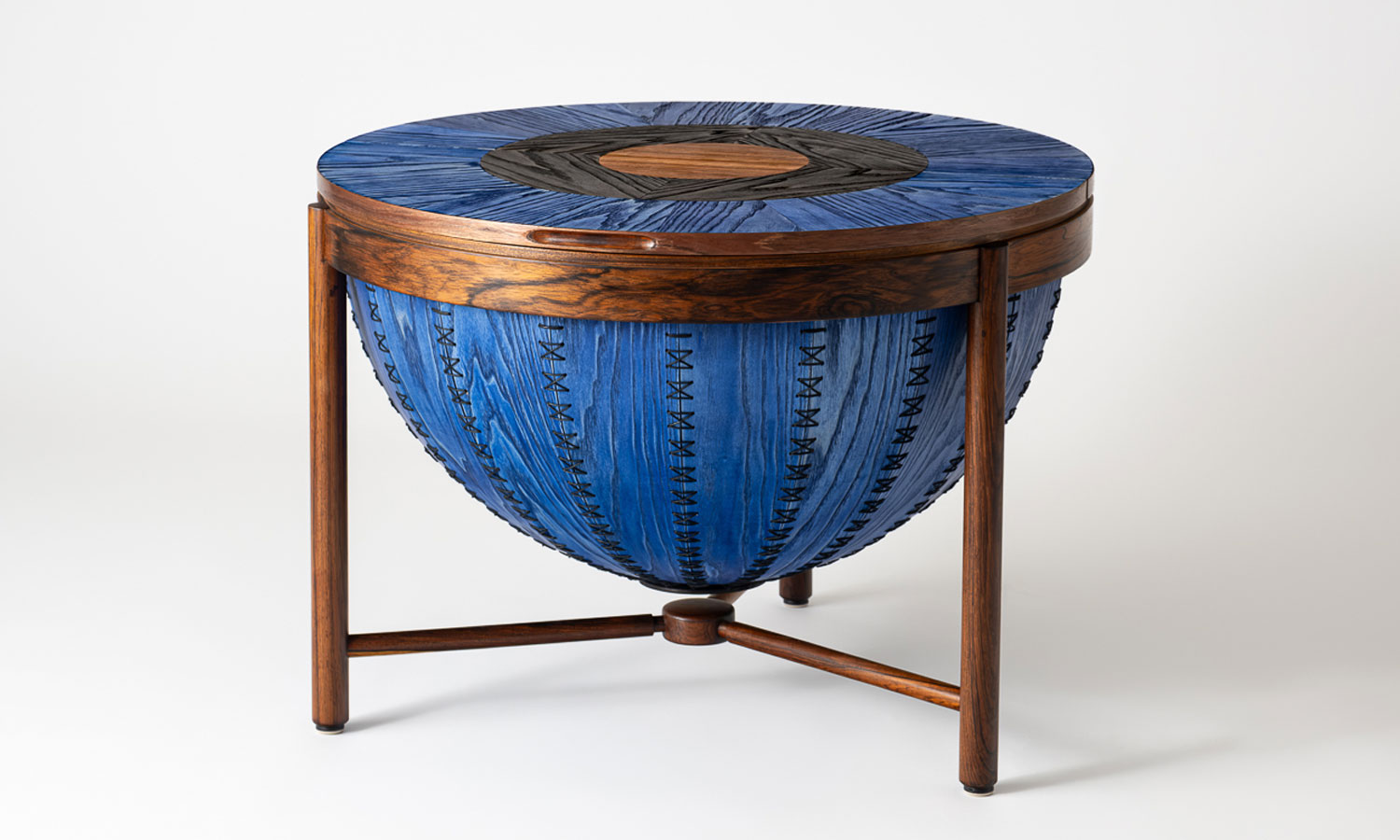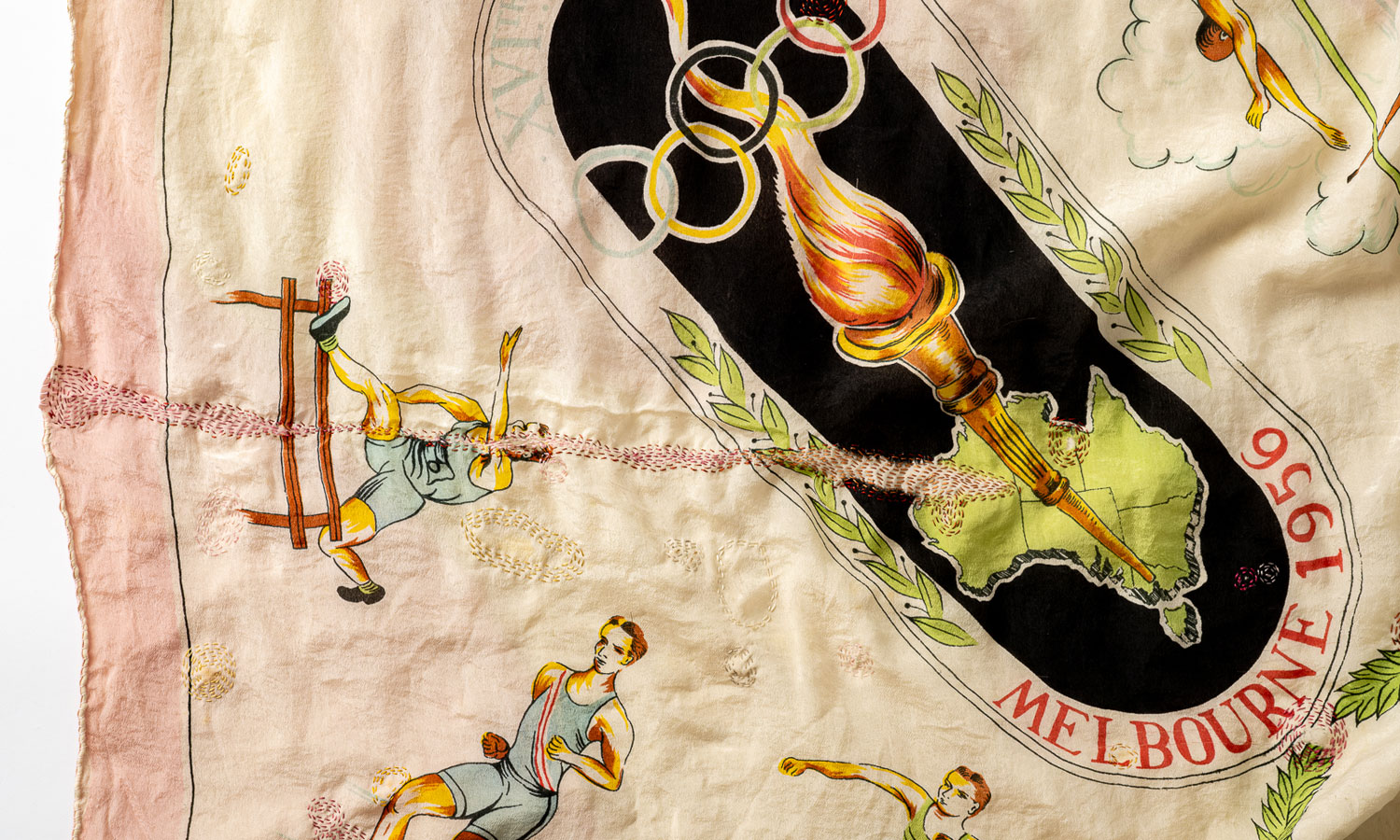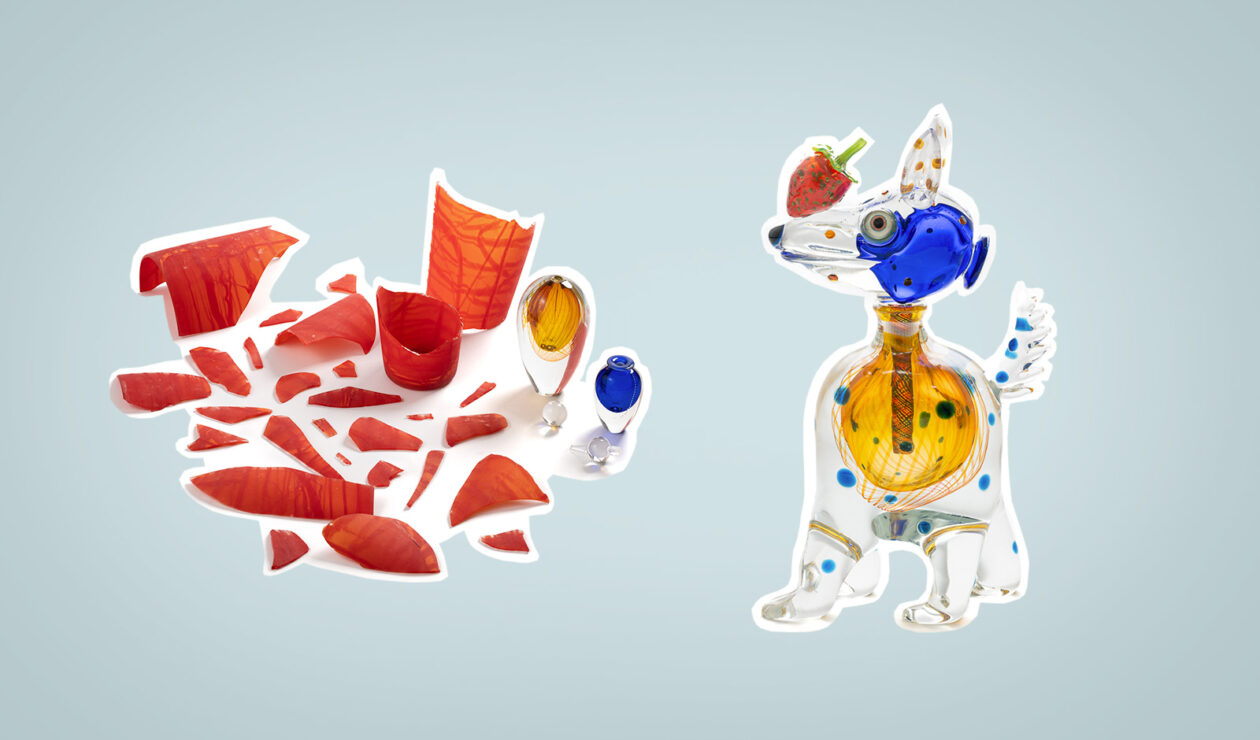The shudder-inducing sound of a glass vase smashing onto a hard surface is usually followed by some swift sweeping and a resigned sigh of regret as the pieces are tipped into the waste bin. In this era of flat-pack furniture, even a broken table or chair is likely to be consigned to the hard rubbish before you can say IKEA.
But it doesn’t necessarily have to be this way.
The Transformative Repair exhibition at JamFactory from April 5-21 showcases the clever and imaginative ways a broad range of items – from an old hammer to a vintage teapot – can be given new life at the hands of talented designers, artists and craftspeople.
“It was a kind of negotiation between the owner of the object and the repairer in terms of what they wanted… and within those limitations some of the designers and repairers have done quite extraordinary things,” says researcher and designer Guy Keulemans, a UniSA Enterprise Fellow.
Keulemans specialises in sustainable craft and design, and led the Transformative Repair project with University of New South Wales lecturer and designer Trent Jansen. He notes that household goods form a “sizeable proportion” of the around 70 million tons of waste that Australia produces annually, explaining that the project’s goal is to find new ways that designers can tackle repair and reuse as a service so customers have more options for prolonging the life of their possessions.
All except one of the 12 designers and craftspeople involved in this iteration of Transformative Repair are based in South Australia, while the items they have worked on belong to a mixture of well-known local personalities and ordinary people.
One of the most colourful – and radical – transformations is by local glass artist Tom Moore, who created a quirky dog out of a handful of shards from a broken red vase and two damaged decorative perfume bottles all owned by former TV presenter Paula Nagel, an ex-JamFactory board member and collector of glass figurines and works of art.
Moore and Nagel – both dog lovers – collaborated on the design of the piece, with the dog’s body able to be removed from the head so it can still be used as a perfume bottle.

Paula Nagel and Tom Moore in the artist’s studio. Photo: UniSA
“I wanted to do this project to make something funny,” says Moore. “It’s absurd… It doesn’t make sense and that’s the value of it. I think it will shine some kind of light on what objects mean to people.”
Keulemans agrees: “I think what Tom did is amazing. I think Paula’s spirit influenced that… Paula is very charismatic, very colourful, and I think you get a sense of that in the repair as much as you get a sense of Tom’s artistry.”
Another item that Keulemans especially loves is an unusual timber knitting table owned by broadcaster Amanda Blair. The table, which won a design competition in Norway in 1962 and can be used to store knitting and haberdashery, was worn and damaged, but furniture designers Melvin Josy and Bolaji Teniola revived it with vibrant blue marquetry and wood-stitching to reflect its function.

Amanda Blair’s 1960s knitting table, post-transformation. Photo: Connor Patterson
A chair designed by Khai Liew has undergone a more subtle change at the hands of Andrew Carvolth, who was hand-picked by Liew to do the repair before he died last year. Keulemans explains that Carvolth didn’t want his work to compete visually with the original design. He used weaving and traditional woodworking techniques to graft a new seat and front legs onto the chair.
“The most interesting concept that Andrew talked about was agricultural grafting – where you bond new growth, like a plum tree, onto old wood stock to help it grow. So Andrew applied that visually in the design of the woven seat which then wraps around the broken edge of the chairback.
“I think it’s also a metaphor around legacy – it’s a generational transition of knowledge from the master craftsman to a new generation.”

Detail of the Khai Liew chair restored by Andrew Carvolth. Photo: Connor Patterson
Other items in the Transformative Repair project include two Louis Vuitton bags (restored with subtle decoration by Peta Kruger), a pair of sun-damaged audio speakers (repaired by Barry Magazinovic), and two separate collections of “stuff from a shed”.
Contemporary jeweller Blanche Tilden inverted the spout of a cracked 19th-century teapot to create an elephant-headed necklace, while textile artist Sera Waters put her skills to work repairing the rips on a souvenir scarf from the 1956 Olympic Games in Melbourne. Waters strengthened the delicate scarf by creating a backing from a women’s old silk nightshirt, with the transformation signifying the strength of women while the scarf’s imagery depicts all male athletes.

Sera Waters repaired this vintage Olympic Games scarf. Photo: Connor Patterson
Whether the Transformative Repair project could have broader application for designers and craftspeople, and the question of how such work is priced, are among issues being explored by Keulemans and his fellow researchers.
“There’s no doubt that it’s often much more expensive than just buying a cheaper replacement,” he acknowledges.
“But people are attached to objects and people also want to do the right thing from an environmental point of view, so I think there is a need for it. I think there is room in the market for it, and we’re trying to kind of ignite that market space.”
In the previous iteration of the Transformative Repair project in 2022, people were invited to donate old or damaged items – with the goods received including a dented red Vespa scooter belonging to actor Yael Stone. Most of the designers and craftspeople were based in Sydney, and the transformed items were auctioned at the Australian Design Centre.

Get InDaily in your inbox. Daily. The best local news every workday at lunch time.
Visitors to the JamFactory exhibition will have the opportunity to take away something equally valuable.
“I’d like them to appreciate the artistry of the repairers,” Keulemans says.
“There’s a beautiful range of creative possibilities that they’ve discovered for transforming all sorts of things and I think it can make you think about objects not just in terms of function and beauty but also the things that we put into them: memories and attachments… relationships and emotions. And these kinds of things are sometimes really important, so when you repair something you’re not just repairing an object, you’re repairing a part of yourself.”
Transformative Repair is showing at JamFactory Adelaide from April 5-21.
Support local arts journalism
Your support will help us continue the important work of InReview in publishing free professional journalism that celebrates, interrogates and amplifies arts and culture in South Australia.
Donate Here




